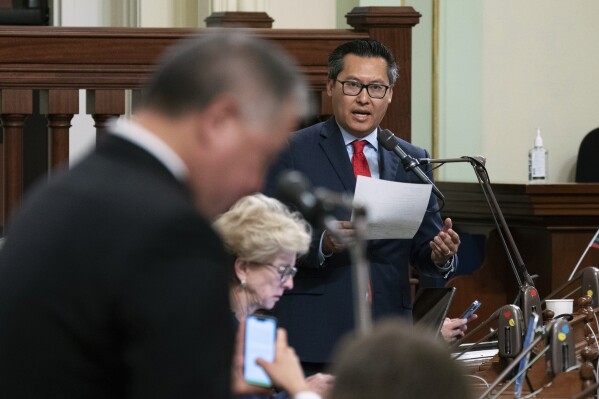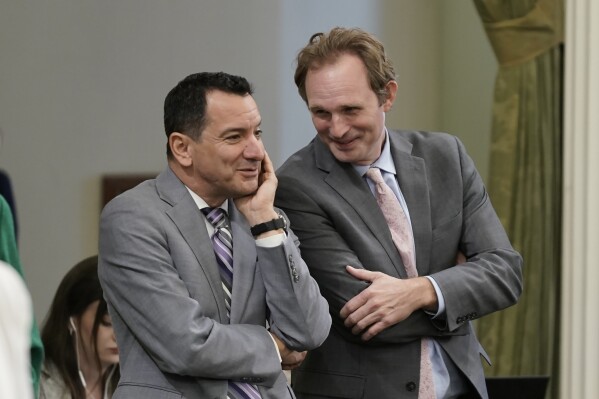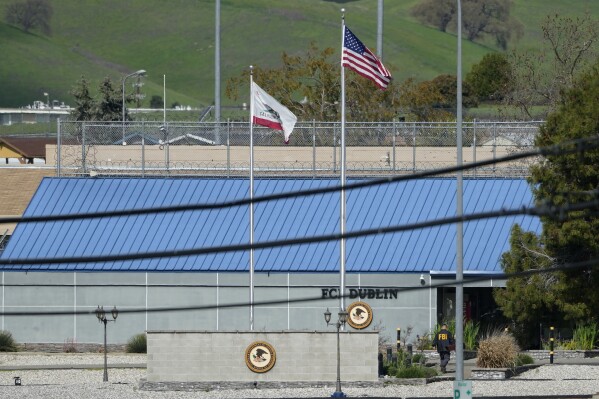Antioch, a city with a complex anti-Asian history, takes meaningful steps toward reconciliation
ANTIOCH, Calif. (AP) — In 1939, after attending the Golden Gate International Exposition in San Francisco, Alfred Chan and his friends were headed back home to the Sacramento-San Joaquin Delta.
“They got really hungry and decided to stop halfway in Antioch for a meal,” his son Ron Chan said. But, the waitress refused to serve the young men or even talk to them. They left the establishment an hour later, hungry and humiliated.
Eighty-two years after that incident, Alfred Chan received an apology delivered in person by Antioch Mayor Lamar Thorpe in November 2022. Chan, a World War II veteran who served in the U.S. Navy and worked 38 years for the city of Oakland, died at age 98, about three months after hearing those words.
“It helped close a bad moment in my father’s life,” Ron Chan said, adding that it gave him peace to see his father’s closure as well. “An apology may be just words that may not be enough to resolve all issues from the past. But without that first step, we have no progress.”
In May 2021, Thorpe had issued a formal apology for Antioch’s mistreatment of early Chinese immigrants, including the torching of Chinatown and driving out its residents, which has been documented by local newspapers and historians. Thorpe’s actions led to major cities like San Jose, Los Angeles and San Francisco passing similar resolutions.



The 2021 apology has also led to local residents and historians delving deeper into the past and working to establish a Chinatown Historic District, complete with murals and museum exhibits highlighting the history and accomplishments of the community in Antioch.
Chinese laborers were among the early population in Antioch, which was named in 1851. They likely numbered just under 100, said Lucy Meinhardt, an Antioch Historical Society Museum board member. They worked in farms, canneries and mines. They helped build river levees and established a Chinatown where the city’s downtown now stands.
In the 19th century, Chinese people across California endured discrimination such as wage disparity, bans on property ownership and sundown laws that barred them from going outside after dark. Those working and living around Antioch were no different.
In 1871, a massive fire wiped out several blocks of Antioch’s Chinatown. The townspeople decided that a Chinese laundry needed to be torn down to stop the blaze. Then in 1876, local newspapers reported that another blaze was deliberately started to drive six Chinese women who were allegedly prostitutes out of their homes. A Buddhist/Tao temple also perished in the fire, Meinhardt said.
It’s become popular local lore that Antioch was a “sundown town” and Chinese residents used tunnels to skirt the rules. Meinhardt says there is no record of such a law “but it had to have been a practice if it existed. I still suspect it existed.”
Before getting involved with the Antioch Historical Society and becoming committee chair for its Chinese History Project, Hans Ho said he had no idea a Chinatown once existed there. Chinese people were undoubtedly treated as second-class citizens, said Ho, who emigrated from Hong Kong in the 1960s.
“Regardless of which narrative you believe in, it is still an atrocity because these people were expelled or persecuted without due process of law and their houses were burned down,” he said.
He was also one of the representatives from the Chinese American community to receive Thorpe’s apology, an act that moved him to tears.
“I was shamelessly crying,” said Ho, who became visibly choked up just recalling that moment. “It’s the most obvious means of reconciliation that I’ve ever encountered.”
Today, the city of more than 111,000 is 25% white while Asians make up 12%. Hispanic and Black residents are 35% and 20% of the population, respectively. Making progress on Asian American representation in public spaces remains an uphill struggle. Plans for a public memorial paying tribute to early Chinese settlers is at a standstill after a consultant recommended the city invest in more research.
Even creating a space for some materials related to Chinese residents at the Antioch Historical Society Museum has gotten pushback.
“(One board member) said that they wanted this to be an ‘American’ museum,” said Dwayne Eubanks, a past president of the historical society, who is African American. “I took umbrage to that.”
He held up a picture of his father in his Army uniform and told the man: “This is an American.”
On Saturday, Eubanks, Meinhardt and Ho all attended the May We Gather event in Antioch, which organizers described as the first national memorial service and pilgrimage in response to anti-Asian violence. Attendees, including the three local residents, walked meditatively with Buddhist monks, nuns and lay leaders, around the city block where Antioch’s Chinatown stood 150 years ago.
Ho said such events while educational, should guard against portraying communities of color as victims and instead spotlight stories of Asian American accomplishment in the face of stark adversity. Somewhat agreeing with his friend, Eubanks pointed out that “healing is a two-way street” and that those who hate must first understand and acknowledge what happened.
“And then they have the opportunity to accept the medicine because hate is a sickness,” he said. “We do not want this to happen to our grandkids. We don’t want history to repeat itself.”
Disclaimer: The copyright of this article belongs to the original author. Reposting this article is solely for the purpose of information dissemination and does not constitute any investment advice. If there is any infringement, please contact us immediately. We will make corrections or deletions as necessary. Thank you.






